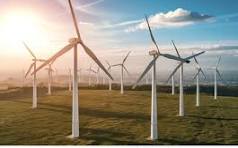- The environmental and economic benefits
- Encouraging market growth prospects
- The need to meet the rising demand for wind energy
- To meet sustainable energy goals and
- To meet social and environmental responsibility.
- Reduced greenhouse gas emissions, which reduces impact on the environment and slows down climate change
- Lower pollution levels and improved air quality, which improves living conditions and health of the public and
- Sustainability promotion is something that most countries emphasize today.
- The first stage involves finding the right spot for installation. It is crucial to evaluate different factors to select the best spot. These parameters include the availability of suitable land, abundance and ideal wind conditions.
- The second stage involves assessing the environment to ensure compliance with environmental regulations. In addition, the local ecosystem must also be considered to ensure there is no harm caused in the process in the short term or the long term.
- The third stage encompasses the construction of the foundation for the wind turbine installation. It has to be very strong to support the large and heavy structure. It must also be robust enough to endure inclement weather conditions.
- The next stage comprises erecting the tower of the structure. This, once again, has to be robust to support the large blades of the turbine while they are rotating. It must also be pretty tall so that the blades are at an optimal height to capture wind easily.
- The fifth stage involves the installation of the rotor blades and the nacelle, which houses the generator. These two are typically the main components that convert wind energy to electricity.
- The following stage involves setting up the electrical connections so that the energy or electricity produced can be transferred to the grid or storage system.
- The seventh stage encompasses testing the components and the entire structure before commissioning. This helps assess the operational efficiency of the structure along with its safety aspects.
- The final stage involves a thorough inspection of the structure to ensure it is absolutely ready to generate power. If it is, the wind turbine is officially handed over and declared to be fit for active operation.
- Spain – 31028 MW, 3.1%
- UK – 30215 MW, 10.4%
- Brazil – 29135 MW, 29.5%
- France – 22196 MW, 10.5%
- Canada – 16989 MW, 8.1%
- Sweden – 16252 MW, 14.5%
- Italy – 12308 MW, 3.7%
- Turkey – 11697 MW, 1535%
- Australia – 11327 MW, 13.4%
- Netherlands – 10749 MW, 14.8%
- Poland – 9307 MW, 10.5%
- Regulatory hurdles and growing environmental concerns regarding impact on landscape and wildlife causing delays or restricting project development
- Issues and technical complexities involved in integrating wind energy into existing power grids that are old and cannot support decentralized and variable energy sources
- Dependence on favorable weather conditions for energy harnessing and production affecting reliability and
- Scarcity of resources and supply chain limitations to transport components of large wind turbines.

